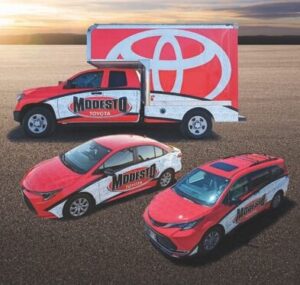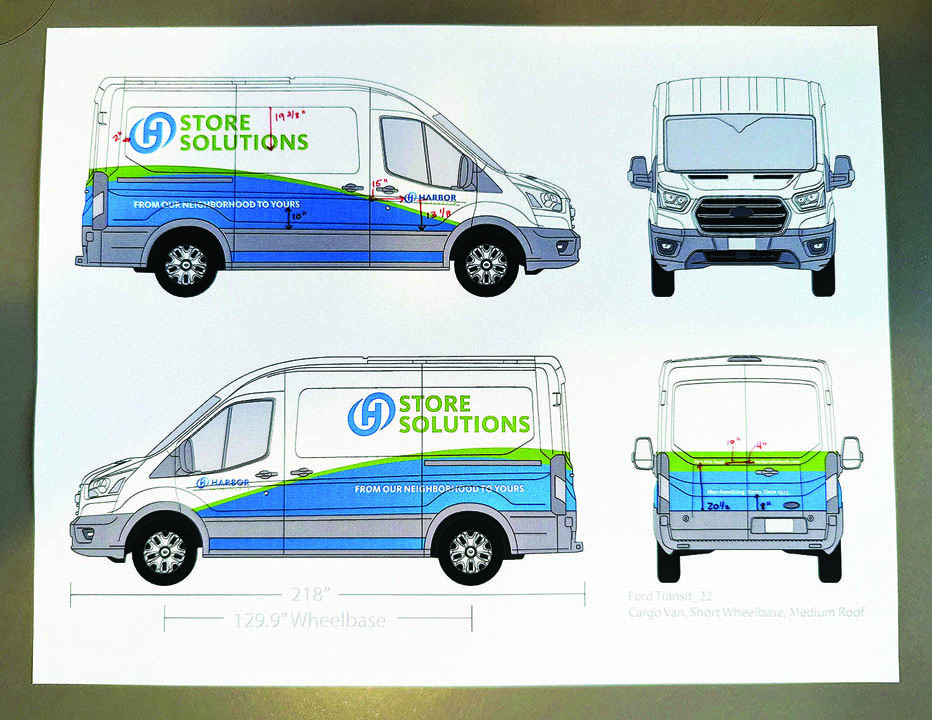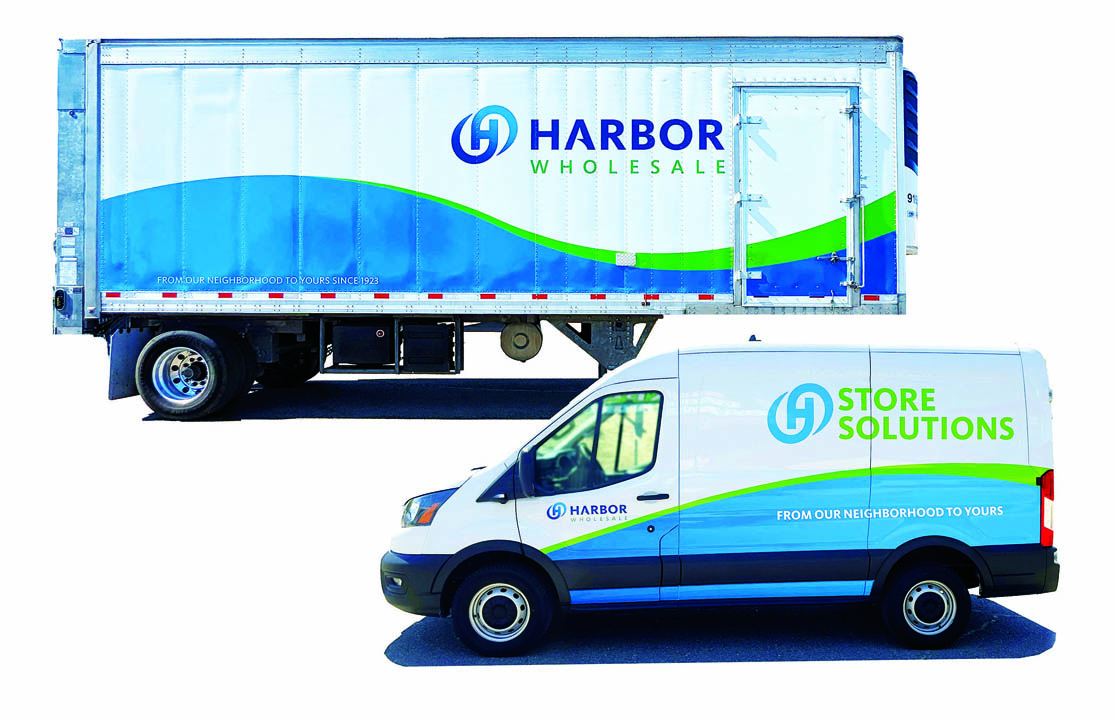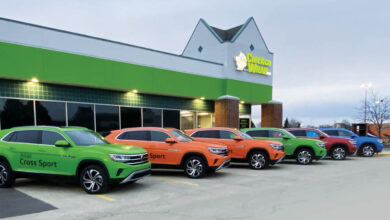Over the last 30 years, our focus at Visual Horizons has slowly shifted toward vehicle graphics. Vehicle wraps and fleet graphics have become our specialty, and today make up half of our business sales.
Most of our fleet accounts started with just one or two vehicles. As we’ve taken care of the customer throughout the wrap process, we’ve grown the number of fleet accounts, and the number of vehicles within each fleet.
Earning the customer’s repeat business through efficiency, consistency, and quality products and workmanship is an excellent way to build your business. From an efficiency and profitability standpoint, it makes a lot more sense to take care of each customer, and earn their repeat business, rather than having to market repeatedly to stir up new accounts. A happy customer will tell others about you, and word-of-mouth marketing is the best kind of advertising.
The three Cs of fleet wraps

Once you have an effective model in place to take care of your customers properly, your shop should run smoothly. The efficiency of the system equals profitability for your company.
If you consider some businesses you routinely use — maybe a restaurant you return to, a supplier you order from, or a service you use — there’s a reason that you return. I think we can boil down these reasons to three things: convenience, cost, and consistency.
Each of these applies in the sign industry as well. When we’re applying these three Cs to our fleet customers, we must consider how we manage their account to ensure that we’re making the process as efficient as possible.
Convenience
There’s a specific process that you must go through to wrap a customer’s vehicle. It’s our job to collect the proper information from the client, to assess the vehicle, to walk them through the coverage options, and to help them determine the type of advertising they hope to achieve with their wraps.
This takes time, at least with the first vehicle, as you establish the groundwork for future vehicles. This part of the process is a great opportunity to build a rapport with the customer. As the customer solidifies their goals for the wraps — whether it’s advertising, brand awareness, or a professional look — the help you provide as you guide them to achieve those goals will build a working relationship that lasts.
We try to make this part of the process as convenient for the customer as possible by having efficient processes in place that are built on experience. After so many years, we know how to assess quickly the vehicle’s paint and obstacles. We take straight photos, note accurate measurements, and determine exactly what kinds of artwork we’ll need from the customer.
After we’ve assessed the vehicle and walked through the process with the customer, we try to do the rest of the work via email or phone so that the customer doesn’t have to come back in unless they want to. We try to remember the customer is busy too.
Once this information is on file, then we can quickly apply it to future vehicles. We still ask the customer to bring by a new vehicle for a quick assessment, but if it’s the same vehicle make and model, then we can move right into production.
Cost
Over the years, we have had fleet accounts primarily composed of one type of vehicle. Maybe it’s cargo vans or box trucks. On each of those vehicles, we would consistently do the same type of wrap coverage. We price out the initial vehicles based on the coverage and strive to maintain that pricing for a couple of years, unless we experience significant pricing fluctuations from our media suppliers. This helps them know a set budget for a time as they add to their fleet.
For other customers, they have a variety of vehicles. Sometimes their concern is more about brand consistency, so the pricing fluctuates as we plan the graphics across these different vehicle types to keep the overall look. They may be less concerned with the price in these cases, and are more interested in maintaining the look of the brand.
Sometimes there is a budget that we need to work within. Vehicles that are on a higher profile route or that have a box or space that lends itself well to more coverage will get a larger portion of the budget. Often we’ll see sales vehicles or manager vehicles receive spot graphics, while service vehicles get the larger coverage.
Consistency
Consistency plays a crucial role in fleet account management. There are multiple areas throughout the process that require consistent results to build trust with the customer and ensure their return. The information we gather from the customer and the tools and processes we use in our shop will help us achieve this consistency. Vehicle templates, color charts, media choices, and our workflow process all contribute to this.
Branding
When we first work with the customer, we either take their existing branding guide and incorporate it into all their advertising, or we help them create a brand. This is not just the logo itself, it’s the colors, the company slogan or mission, and the overall feel of the brand that the company is trying to establish.
Establishing this information is part of the initial process as we gather their logo files, Pantone colors, font types, and any other information we need. We then determine how it will fit on a vehicle based on this information. What may work on a website or postcard won’t always work on the side of a vehicle, so we walk through this with the customer.
Once we’ve worked through the design phase with the customer and have final approval, we do a sample print of the wrap before moving into production. This sample print shows the customer the colors on the actual wrap media. We have the customer sign off on the color sample before we start printing. We also keep this color sample in the customer’s file for future reference.
We’ve purchased multiple large-format printers over the years and each one will print colors slightly different. Having these color samples on file is a great reference for any future reprints — whether it’s on the same printer or a new one.
Placement
We design our vehicle wraps on either a vehicle template or on a scaled photo of the actual vehicle. During the installation process, we use printed proofs of the final approved layout. On these proofs, we also note the placement of graphics on various vehicle types. Draw arrows from an obvious point on the vehicle to a line of text or element of the artwork and note the sizing.
This helps create a cohesive look on the wrapped vehicles. If they were all parked side-by-side in the yard, the graphics placement should look uniform.
If the same vehicle type comes in, we reference the proof for that vehicle type. If it’s still a full-size pickup truck, for example, but it’s a Chevy instead of a Ford, the placement will probably measure out differently even though it looks similar. Print a template for the exact vehicle and note the sizing. This will speed the installation of subsequent vehicles.

Archives
As previously mentioned, we keep a copy of the approved printed color sample of the wrap on file. Along with this paperwork are the invoice, work order notes, the measurements of the vehicle(s), and the notes for graphics placement.
We file all this paperwork alphabetically in a row of filing cabinets. Repeat clients have their own folder to keep their paperwork organized.
We also keep digital files of all our customer artwork. We back up these art files to redundant backup drives and catalog them in a program called Cathy. This program enables us to perform a word or phrase search and locate the backup folder where a particular art file is stored.




